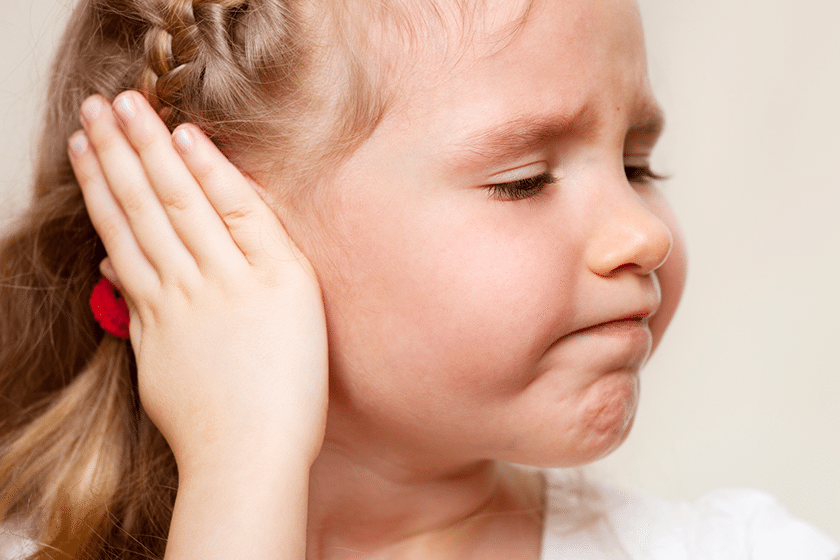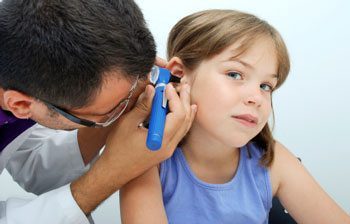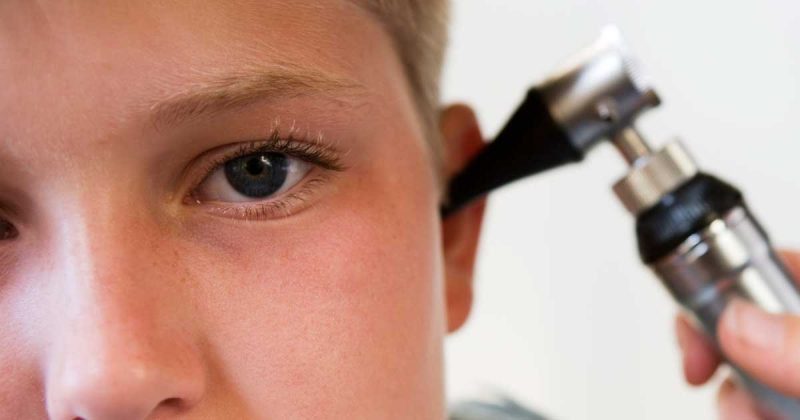Wellness
Clinic Wellness Team. A key factor to spine or back pain conditions is staying healthy. Overall wellness involves a balanced diet, appropriate exercise, physical activity, restful sleep, and a healthy lifestyle. The term has been applied in many ways. But overall, the definition is as follows.
It is a conscious, self-directed, and evolving process of achieving full potential. It is multidimensional, bringing together lifestyles both mental/spiritual and the environment in which one lives. It is positive and affirms that what we do is, in fact, correct.
It is an active process where people become aware and make choices towards a more successful lifestyle. This includes how a person contributes to their environment/community. They aim to build healthier living spaces and social networks. It helps in creating a person’s belief systems, values, and a positive world perspective.
Along with this comes the benefits of regular exercise, a healthy diet, personal self-care, and knowing when to seek medical attention. Dr. Jimenez’s message is to work towards being fit, being healthy, and staying aware of our collection of articles, blogs, and videos.

by Dr Alex Jimenez DC, APRN, FNP-BC, CFMP, IFMCP | Chiropractic, Health, Wellness
Chiropractic care may be able to bring about relief for allergy sufferers. Allergy symptoms may be triggered by misalignments in the neck and upper back, which contain nerves important for the body’s respiratory and immune systems. These misalignments are believed to interfere with the communication between these systems and the brain and cause or worsen allergy symptoms. Advanced Chiropractic Wellness offers adjustments which are targeted to reduce the effects of allergies on the body.
Allergies Result When The Body’s Immune System Is Triggered To Action By Substances That Should Be Considered Innocuous
Typically, this results in the release of excess histamine, which causes the characteristic watery and itchy eyes, stuffy nose, and increased sinus pressure. The sinus pressure may cause extremely painful headaches on top of the general discomfort of the other two. In some cases, body parts may also swell. The eye area is most commonly affected by such puffiness.When all of these symptoms are put together, it can cause serious suffering. Many people find that they can’t go outdoors during the height of the seasons in which their allergy triggers are released. Such triggers include the pollen from juniper and elm trees. This pollen is among the first of the allergens to hit in the spring, so Illinois residents will be encountering it soon if they aren’t already.

Later, Flower Pollen, Molds & Dust Take The Place Of The Tree Pollen
“After a full winter, nobody wants to have to stay indoors breathing filtered air. It’s time to go out and have fun! Yet for many, allergy medication isn’t a good solution. Drowsiness is a common side-effect, and even the non-drowsy types have side-effects of their own. What people need is a solution that addresses the problem at its roots,” said Dr. Scott Stratton, a chiropractor at Advanced Chiropractic Wellness.This solution, according to Dr. Stratton, is chiropractic realignment of the vertebrae that contain the nerves that communicate between the brain and the body’s respiratory and immune systems. The theory is that misalignment here causes miscommunication between these systems, resulting in exaggerated bodily responses to allergens.”When the brain and body can’t get a clear signal pathway between each other, only some of the needed information makes it through. Then, both sides have to try to fill in missing information, and this results in bad guesses. Chiropractic realignment clears up the signal and allows the brain and body to make appropriate responses to its environment,” Dr. Stratton explained.About Advanced Chiropractic WellnessThe Advanced Chiropractic Wellness clinic offers chiropractic care, lifestyle counseling, laser treatments, and more. They take a holistic approach that aims to improve a patient’s overall health instead of simply treating specific symptoms.

Call Today!
Visit their website at http://www.drscottstratton.com/ for more information.Advanced Chiropractic Wellness

by Dr Alex Jimenez DC, APRN, FNP-BC, CFMP, IFMCP | Chiropractic, Wellness
Ear problems can be excruciatingly painful, especially in children. With 10 million new cases every year, ear infections (otitis media) are the most common illness affecting babies and young children and the number one reason for visits to the pediatrician�accounting for more than 35 percent of all pediatric visits.

Almost half of all children will have at least one middle ear infection before they�re a year old, and two-thirds of them will have had at least one such infection by age 3. The symptoms can include ear pain, fever, and irritability. Otitis media can be either bacterial or viral in origin, and frequently results from another illness such as a cold. For many children, it can become a chronic problem, requiring treatment year after year, and putting the child at risk of permanent hearing damage and associated speech and developmental problems.
Standard treatment for most cases of otitis media is with antibiotics, which can be effective if the culprit is bacterial (antibiotics, of course, do nothing to fight off viruses). But, according to many research studies, antibiotics are often not much more effective than the body�s own immune system. And repeated doses of antibiotics can lead to drug-resistant bacteria that scoff at the drugs, while leaving the child screaming in pain.

Frequent ear infections are also the second most common reason for surgery in children under 2 (with circumcision being the first). In severe cases�for example, when fluids from an ear infection haven�t cleared from the ear after several months, and hearing is affected�specialists sometimes prescribe myringotomy and tympanostomy, more commonly known as �ear tubes.� During the surgical procedure, a small opening is made in the eardrum to place a tube inside. The tube relieves pressure in the ear and prevents repeated fluid buildup with the continuous venting of fresh air. In most cases, the membrane pushes the tube out after a couple of months and the hole in the eardrum closes. Although the treatment is effective, it has to be repeated in some 20 to 30 percent of cases. And this kind of surgery requires general anesthesia, never a minor thing in a small child. If the infection persists even after tube placement and removal, children sometimes undergo adenoidectomy (surgical removal of the adenoids)�an option that is effective mostly through the first year after surgery.
Before yet another round of �maybe-they�ll-work-and-maybe-they-won�t� antibiotics or the drastic step of surgery, more parents are considering chiropractic to help children with chronic ear infections. Dr. Joan Fallon, a chiropractor who practices in Yonkers, New York, has published research showing that, after receiving a series of chiropractic adjustments, nearly 80 percent of the children treated were free of ear infections for at least the six-month period following their initial visits (a period that also included maintenance treatments every four to six weeks).
�Chiropractic mobilizes drainage of the ear in children, and if they can continue to drain without a buildup of fluid and subsequent infection, they build up their own antibodies and recover more quickly,� explains Dr. Fallon. She�d like to see her pilot study used as a basis for larger-scale trials of chiropractic as a therapeutic modality for otitis media.
Dr. Fallon uses primarily upper-cervical manipulation on children with otitis media, focusing particularly on the occiput, or back of the skull, and atlas, or the first vertebra in the neck. �Adjusting the occiput, in particular, will get the middle ear to drain. Depending on how chronic it�s been and on where they are in their cycle of antibiotics, children generally need to get through one bout of fluid and fight it off themselves.� That means, for the average child, between six and eight treatments. If a child�s case is acute, Dr. Fallon will check the ear every day, using a tympanogram to measure the ear and track the movement of the eardrum to make sure that it�s draining. �I�ll do adjustments every day or every other day for a couple of days if they�re acute, and then decrease frequency over time.�
Dr. Fallon, whose research garnered her the acclaim of childrearing magazines like�Parenting�and�Baby Talk, often sees great success when she treats a child for otitis media. �Once they fight it themselves, my kids tend to do very well and stay away from ear infections completely. Unless there are environmental factors like smoking in the house, an abnormally shaped Eustachian tube, or something like that, they do very well,� she says.
�I have two large pediatric groups that refer to me on a regular basis. In the winter, when otitis is most prevalent, I see five or six new children each week from each group,� says Dr. Fallon. �It�s safe and effective and something that parents should try, certainly before inserting tubes in their children�s ears.�
Chiropractic Care Can Help�
Come on in and talk to us about your child�s ear infections. Doctors of chiropractic are licensed and trained to diagnose and treat patients of all ages and will use a gentler type of treatment for children.�However, Texas chiropractors can answer any questions a patient�may have and refer them to a specialist, they must remain within the scope of their field which is the�Muscular�and the�Musculoskeletal system.

Call Today!
Source:
Dr. Matthew C. Supran, PA

by Dr Alex Jimenez DC, APRN, FNP-BC, CFMP, IFMCP | Natural Health
Middle-age white Americans with limited education are increasingly dying younger, on average, than other middle-age U.S. adults, a trend driven by their dwindling economic opportunities, research by two Princeton University economists has found.
The economists, Anne Case and Angus Deaton, argue in a paper released Thursday that the loss of steady middle-income jobs for those with high school degrees or less has triggered broad problems for this group. They are more likely than their college-educated counterparts, for example, to be unemployed, unmarried or afflicted with poor health.
“This is a story of the collapse of the white working class,” Deaton said in an interview. “The labor market has very much turned against them.”
Those dynamics helped fuel the rise of President Donald Trump, who won widespread support among whites with only a high school degree. Yet Deaton said his policies are unlikely to reverse these trends, particularly the health care legislation now before the House that Trump is championing. That bill would lead to higher premiums for older Americans, the Congressional Budget Office has found.
“The policies that you see, seem almost perfectly designed to hurt the very people who voted for him,” Deaton said.
Case and Deaton’s paper, issued by the Brookings Institution, follows up on research they released in 2015 that first documented a sharp increase in mortality among middle-aged whites.
Since 1999, white men and women ages 45 through 54 have endured a sharp increase in “deaths of despair,” Case and Deaton found in their earlier work. These include suicides, drug overdoses, and alcohol-related deaths such as liver failure.
In the paper released Thursday, Case and Deaton draw a clearer relationship between rising death rates and changes in the job market since the 1970s. They find that men without college degrees are less likely to receive rising incomes over time, a trend “consistent with men moving to lower and lower skilled jobs.”
Other research has found that Americans with only high school degrees are less likely to get married or purchase a home and more likely to get divorced if they do marry.
“It’s not just their careers that have gone down the tubes, but their marriage prospects, their ability to raise children,” said Deaton, who won the Nobel prize in economics in 2015 for his long-standing work on solutions to poverty. “That’s the kind of thing that can lead people to despair.”
It’s not entirely clear why these trends have affected whites much more than they have African-Americans or Hispanics, whose death rates are improving.
Case and Deaton note that many Hispanics are “markedly better off” than parents or grandparents who were born abroad, enabling a greater sense of optimism. African-Americans, they add, may have become more resilient to economic challenges given their long-standing disadvantages in the job market.
The data is clear, though: In 1999, the death rate for high school-educated whites ages 50 through 54 was 30 percent lower than the death rate for all African-Americans in that age group. By 2015, it was 30 percent higher.
The educational split is also growing. Even while the death rate for whites without a college degree is rising, the rate for whites who are college graduates is falling, Case and Deaton found.
Americans with less education are also faring much worse when compared with adults in other countries, Case and Deaton concluded. Death rates in Europe for people with limited education are falling — and in most countries, they’re falling faster than death rates for those with more education.
For those reasons, Case and Deaton discount the notion that government disability benefit programs are responsible for some of these problems by enabling more Americans to stop working. Social welfare programs in Europe are typically more generous yet haven’t caused a rise in death rates.
Given the long-running nature of these trends, many of which stem from the 1970s, reversing them could take years, Case and Deaton write. But there are immediate steps that could be taken, Deaton said in the interview. Routine prescriptions for opioids should be cut back.
And, “Europe has a much better safety net than we do, and they’re not seeing the same sort of problems as we are,” he said.

by Dr Alex Jimenez DC, APRN, FNP-BC, CFMP, IFMCP | Natural Health
With spring right around the corner, chances are you�ll begin to show symptoms of the “Spring Fever.” It�s not an actual disease in a conventional sense, say experts, and you won�t be bed ridden. But you may experience biological problems and physical symptoms that actually do exist.
�While it�s not a recognized medical condition, people do experiences changes in mood and energy level as spring approaches,� Dr. Sharad Paul, author of �The Genetics of Health: Understand Your Genes for Better Health,� tells Newsmax Health.
�This is definitely a disorder of wealthy nations who pay more attention to the changes in weather as opposed to parts of India and Asia for example where people can�t afford to dwell on the weather. We tend to hibernate and become depressed during the dark winter months and then come to life as the temperatures soar.
One way to minimize the effect of Spring Fever is to maintain exercise levels throughout the winter even if you have to work out indoors and make sure you keep your vitamin D levels stable, Paul says.
�You may need to take supplements if you simply can�t get enough sunshine,� he adds. �You should also try to maintain a similar diet year round so you don�t gain too much weight in winter and then have to shed pounds in the spring.�
Here are six symptoms of Spring Fever to watch for:
You have a surge of energy. Maybe it�s that extra dose of vitamin D from springtime sunshine that gives folks the extra energy to start jogging after work or taking lunch hour walks. Dr. Miguel Smolensky, Ph.D., professor at the University of Texas-Houston School of Public Health, says it may be the image of the body �springing to life� after winter doldrums that gives us the urge to move more.
You�ve got romance on the brain. This is partly because both men and women are wearing less clothing say experts, but it�s also because sunlight helps us release endorphins. A study conducted by the University of Tromso in Norway showed that these extra endorphins put us in a better mood and increase physical attraction.
You are eating lighter. If you start to crave fresh salads and fruit, you�re not alone. Paul says that typically, people eat more and exercise less during the cold winter months. That�s partly because our ancestors used to experience a period of famine during the winter months and to plan for it, they would eat heavier foods just like bears who stock up for winter hibernation. Also in many parts of the country, it�s harder to get reasonably priced fresh fruits and veggies during the off season.
You�re sleeping less. In spring, you may find it harder to sleep at your usual time and that�s not just because we switch to daylight saving time. The additional sunlight tells our bodies to produce less melatonin, a hormone secreted by the pineal gland that regulates our circadian rhythm and natural wake-sleep patterns.
Your general mood brightens. Paul says that the onset of more sunshine in spring and the abundance of color bring us out of our �winter blues� and puts us in a more positive place. You find yourself feeling happier and more sociable. We also experience an increase in production of the �happy hormone� serotonin during the transition to spring.
You may become obsessed with cleaning. The urge to clean the house from top to bottom, and spruce up the yard are sure signs of Spring Fever. Although spring cleaning is probably not caused by biology, it has been so ingrained in our Western culture that our subconscious mind takes over, urging us to get out the cleaning supplies and scrub away winter grime. Cleaning services and products are known to boost their advertising during springtime, cashing in on our natural urge to purge away the old and make way for the new.

by Dr Alex Jimenez DC, APRN, FNP-BC, CFMP, IFMCP | Integrative Functional Wellness, Integrative Medicine, Natural Health
The practice of yoga coupled with deep breathing eased the symptoms of individuals suffering from depression without the use of potentially harmful medication, according to a recent study published in the Journal of Alternative and Complementary Medicine.
Major depressive disorder or MMD, or depression, is a common mood disorder causing sadness and serious mental health issues. Depression affects about 16 million Americans each year, according to the Centers for Disease Control and Prevention.
Researchers from Boston University Medical Center who conducted the latest study concluded that twice weekly yoga classes in addition to home practice helped brighten the mood of participants not taking antidepressants and for those who claimed their medication wasn�t working.
Since antidepressants come with common side effects such as nausea and insomnia, experts say that this new study offers an exciting and safe alternative treatment to the treatment of this common disorder.
Dr. Delia Chiaramonte, director of education, at the Center for Integrative Medicine at the University of Maryland School of Medicine, tells Newsmax Health that this new study solidifies the research that�s already been done examining the benefits of yoga not only for the body, but for the mind as well.
�There are multiple studies that suggest the benefits of yoga in people suffering from depression,� she says. �Exercise has also shown to have significant benefit in alleviating depression as well as meditative practices. Since the practice of yoga combines both physical exercise and meditation, in my opinion, it should be considered as an adjunct treatment for depression.
�It can be used alongside other forms of exercise, cognitive strategies, meditation, guided imagery and in severe cases, antidepressant medication.�
While the participants in the Boston University study practiced two to three 90 minute sessions of Iyengar yoga along with their home practice, experts say that a few minutes of daily practice can produce powerful results.
Iyengar yoga is a style that incorporates precise movements and alignments to balance the body and mind. Kundalini yoga, on the other hand, works on the energy systems of the body and can create equanimity in minutes to help battle depression, says Dr. Gregg Biegel, a certified Kundalini instructor, so you get more bang for your buck.
�People who are diagnosed with depression are almost always prescribed either short term or long term medication to combat their symptoms. But the harmful side effects of these drugs can sometimes make those symptoms worse,� he tells Newsmax Health.
�That�s like putting a Band-Aid on a severed artery. Scientists are now exploring alternative approaches to a healthier lifestyle without medication, and yoga, an ancient art that�s enjoying quite a revival in this stressful society, is a valuable tool.
�Human beings are complex emotional animals. Our behavior is directly controlled by the central nervous system, the autonomic nervous system and our glandular system. When these control systems are out of balance, you experience a wide range of emotions from nervousness to anger to anxiety and depression.�
The practice of yoga, says the expert, can help regulate and balance the body�s control systems by incorporating breathe and movement.
�Within minutes of practicing these physiologically powerful series of movements we call kriyas we can banish the blues and stave off depression,� he says.
While Kundalini yoga is considered to be the �fast track� to establishing equanimity between body and mind, it is important to study with a certified teacher, says Biegel. Since there as many styles of yoga as there are flavors of ice cream, find a class that suits your needs and preferences.
�Practicing yoga on a regular basis combined with eating a healthy diet and enjoying a positive lifestyle provides a natural alternative to medication in battling depression,� says Biegel.

by Dr Alex Jimenez DC, APRN, FNP-BC, CFMP, IFMCP | Diets, Fitness
Just a bit of vigorous exercise each day could help some children and teens reduce their risk of developing heart problems and diabetes, researchers say.
The new study looked at nearly 11,600 kids, aged 4 to 18, in the United States, Brazil and Europe.
The investigators found that replacing light exercise with as little as 10 minutes a day of intense activity may provide significant cardiometabolic benefits for young people who have relatively large waists and elevated levels of insulin in their blood. These are factors that put them at risk for developing heart problems and metabolic diseases, such as type 2 diabetes.
“The results suggest that substituting modest amounts of vigorous physical activity for longer-duration light exercise may have cardiometabolic benefits above and beyond those conveyed by moderate activity and the avoidance of sedentary behavior,” lead author Justin Moore said.
Moore is an associate professor of family and community medicine at Wake Forest Baptist Medical Center in Winston-Salem, N.C. He noted that more research is needed because additional factors that contribute to disease risk — such as diet and genetics — need to be taken into account.
“If such studies provide robust results, a relatively brief but intense dose of physical activity — perhaps as little as 10 minutes day, which is certainly feasible for most youth — could turn out to be part of a ‘prescription’ for children to achieve or maintain cardiac and metabolic health,” Moore said in a medical center news release.
The study was published recently in the journal Medicine & Science in Sports & Exercise.

by Dr Alex Jimenez DC, APRN, FNP-BC, CFMP, IFMCP | Natural Health
Lowering your salt intake could mean fewer trips to the bathroom in the middle of the night, a new study suggests.
Most people over age 60, and many even younger, wake up to pee one or more times a night. This is called nocturia. This interruption of sleep can lead to problems such as stress, irritability or tiredness, which can affect quality of life.
There are several possible causes of nocturia, including — as this study found — the amount of salt in your diet.
“This is the first study to measure how salt intake affects the frequency of going to the bathroom, so we need to confirm the work with larger studies,” said study leader Tomohiro Matsuo, from Nagasaki University in Japan.
“Nighttime urination is a real problem for many people, especially as they get older. This work holds out the possibility that a simply dietary modification might significantly improve the quality of life for many people,” he said.
The study included more than 300 Japanese adults. They all had high salt intake and sleeping problems. They were given instructions and help to reduce their salt intake and followed for 12 weeks.
The American Heart Association recommends that people consume no more than 2,300 milligrams (2.3 grams) of sodium daily. That’s about a teaspoon of salt.
Ideally, the AHA says, people shouldn’t have more than 1,500 milligrams (1.5 grams) of sodium per day. Table salt is made up of about 40 percent sodium, according to the AHA.
More than 200 people in the study reduced their salt intake. They went from an average of 11 grams per day to 8 grams a day.
With that reduction in salt, the average number of nighttime trips to the bathroom to urinate fell from 2.3 to 1.4 times per night. The number of times people needed to urinate during the day also decreased.
The drop in nighttime bathroom visits also led to an improvement in quality of life, researchers said.
In comparison, the nearly 100 participants whose average salt intake rose — from 9.6 grams per night to 11 grams nightly — had an increase in nighttime trips to the bathroom, from 2.3 to 2.7 times a night, the study revealed.
The study was to be presented Sunday at the European Society of Urology annual meeting, in London. Findings presented at meetings are typically viewed as preliminary until they’ve been published in a peer-reviewed journal.
Dr. Marcus Drake is a professor at the University of Bristol in England and leader of the working group for the ESU Guidelines Office Initiative on Nocturia. “This is an important aspect of how patients potentially can help themselves to reduce the impact of frequent urination. Research generally focuses on reducing the amount of water a patient drinks, and the salt intake is generally not considered,” he said.
“Here we have a useful study showing how we need to consider all influences to get the best chance of improving the symptom,” Drake said in an ESU news release.

















